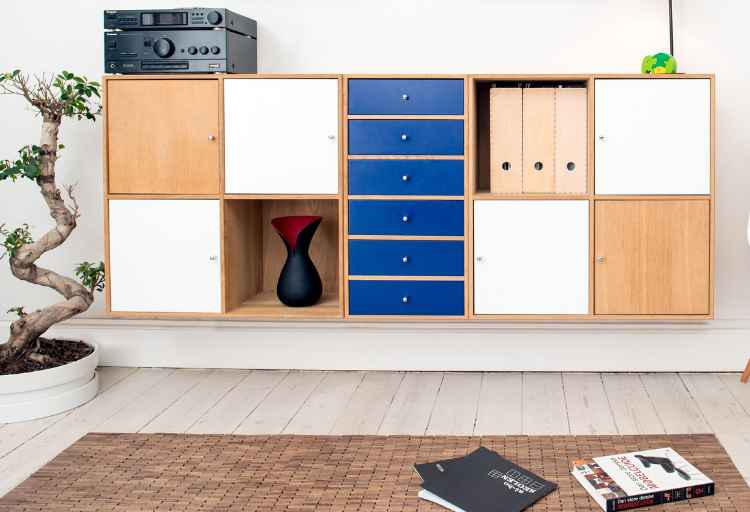How To Scribe A Cabinet To A Wall
Are you looking to add a stylish cabinet to your wall but worried about the unsightly gaps that may occur? Look no further! In this article, we will guide you through the process of scribing a cabinet to a wall, ensuring a perfect fit and seamless finish.
By using simple tools and following these step-by-step instructions, you’ll be able to achieve professional results in no time.
Before getting started, gather all the necessary tools and materials.
Next, position the cabinet against the wall and trace the profile onto it. This will serve as your guideline for cutting and trimming the cabinet to match the uneven wall surface.
Once you have achieved an accurate fit, secure the cabinet firmly to the wall using appropriate screws or brackets.
Scribing a cabinet may seem like a daunting task, but with our easy-to-follow directions, you’ll be able to tackle it confidently.
So let’s get started on transforming your space with a beautifully scribed cabinet!

Contents
Key Takeaways
- Gather necessary tools and materials before starting
- Position cabinet against wall and trace profile onto it
- Use shims behind or under the cabinet for a flush fit against the wall
- Securely attach the cabinet to the wall with screws, bolts, or anchors
Gather the Necessary Tools and Materials
Now let’s get started by gathering all the tools and materials you’ll need to securely scribe your cabinet to the wall. Using the right tools, materials, and techniques for scribing a cabinet to a wall can ensure a professional and seamless installation.
Here are some discussion ideas about gathering the necessary tools and materials for this task:
- Choosing the right type of cabinet for your specific wall and space requirements is crucial. Consider factors such as size, style, and functionality when making your selection.
- Exploring different materials for shims is important in adjusting the cabinet to fit perfectly against the wall. Shims are used to fill gaps between the cabinet and uneven walls, ensuring a tight fit. Common shim materials include wood, plastic, or metal strips.
By carefully selecting the appropriate cabinet and using high-quality shims, you can achieve a flawless result that enhances both the aesthetic appeal and functionality of your space.
Position the Cabinet Against the Wall
To level and secure the cabinet, place a level on top of the cabinet and adjust it until it’s perfectly horizontal. Once leveled, use screws to secure the cabinet to the wall studs.
If needed, use shims behind or under the cabinet to adjust its position and ensure it’s flush against the wall.
Level and Secure the Cabinet
First, make sure the cabinet is level and securely fastened to the wall. This step is crucial to ensure your cabinet remains stable and safe.
Here are four important things to consider when leveling and securing the cabinet:
- Use proper anchoring techniques for securing cabinets to the wall. This may include using wall anchors or screws that are appropriate for the weight of the cabinet.
- It’s essential to use a level to ensure the cabinet is straight and secure. Place the level on top of the cabinet and adjust it until it indicates a perfectly horizontal position.
- Once you’ve confirmed that the cabinet is level, mark the positions where you’ll be attaching it to the wall.
- Finally, securely fasten the cabinet to the wall using screws or other appropriate hardware, making sure they’re tightened properly.
By following these steps, you can ensure that your cabinet is securely attached to the wall and will provide a safe storage solution for your belongings.
Use Shims to Adjust the Cabinet
Using shims is a clever way to fine-tune the level and stability of your cabinet. When installing a cabinet, precision is crucial to ensure a seamless fit against the wall. Shims are small, tapered wedges that can be placed behind or underneath the cabinet to make adjustments and achieve a perfectly level installation.
It’s important to remember that even the slightest misalignment can affect the overall appearance and functionality of your cabinet.
To avoid common mistakes when using shims for cabinet installation, always start with a solid foundation by securely anchoring the cabinets to the wall studs.
This will prevent any shifting or movement once installed. Additionally, be mindful not to overuse shims, as this can lead to an unstable cabinet. Use them sparingly and strategically where needed.
By utilizing shims effectively, you can ensure that your cabinet is precisely aligned and securely attached to the wall, creating a polished look for your space while maximizing its functionality.
Trace the Wall Profile onto the Cabinet
To trace the wall profile onto the cabinet, you can use a contour gauge. This handy tool allows you to accurately capture the shape of the wall and transfer it onto the cabinet. Simply press the contour gauge against the wall, following its contours, and then trace that shape onto the cabinet.
Use a Contour Gauge
Once you’ve got your contour gauge in hand, it’s time to get creative and start shaping your cabinet to fit perfectly against the wall. Using a contour gauge has numerous applications in woodworking and can provide precise measurements for a seamless fit. Here are some tips to help you make the most of your contour gauge:
- Start by positioning the gauge on the wall and pressing it firmly against the profile.
- Carefully slide the pins along the contours, making sure they accurately capture every detail.
- Once you’ve traced the entire profile onto the gauge, transfer those markings onto your cabinet using a pencil or marker.
By following these steps and using a contour gauge effectively, you can ensure that your cabinet will align flawlessly with the wall’s unique shape. So go ahead, embrace your creativity, and create a custom-fit cabinet that adds both functionality and style to your space.
Transfer the Profile onto the Cabinet
Position the traced profile from the contour gauge onto your cabinetry, ensuring a seamless fit that beautifully molds to the unique shape of your space.
To transfer the profile accurately, you have alternative methods for tracing the profile as well. One option is using a piece of cardboard or stiff paper. Simply place it against the wall and press it firmly against the protruding edges of the contour gauge’s pins. Then, carefully remove it from the wall without altering its shape.
Next, position this template onto your cabinet and trace along its outer edges with a pencil or marker.
Another method involves using painter’s tape. Apply strips of tape along the outline of the profile on both the wall and cabinet surfaces, creating a guide for cutting or shaping later on.
Whichever method you choose, take your time and ensure precision in transferring the profile to achieve a perfect fit for your cabinet installation.
Cut and Trim the Cabinet
In order to achieve a seamless installation, it’s important to carefully cut and trim the cabinet. Start by using the appropriate cutting techniques to ensure precise measurements and clean edges. Measure twice before making any cuts to avoid mistakes.
Use a circular saw or a jigsaw to cut along the marked lines, taking your time and following the instructions for your specific tool. Once the cabinet is cut, it’s time for the finishing touches. Smooth out any rough edges with sandpaper or a file, ensuring that everything is level and flush against the wall.
Check for any gaps or uneven areas and make adjustments as needed. Taking these steps will result in a perfectly fitted cabinet that seamlessly blends into your wall space.
Secure the Cabinet to the Wall
To ensure a sturdy and secure installation, it’s crucial to firmly attach the cabinet to the wall. There are various anchoring methods for securing cabinets to the wall that you can choose from.
One common method is using screws or bolts to anchor the cabinet directly into the wall studs. This provides a strong and reliable support for your cabinet.
Another option is using toggle bolts or anchors, especially if there aren’t any studs available in the desired location. These anchors expand behind the drywall, creating a secure attachment point.
However, there are some common mistakes to avoid when securing cabinets to the wall. Firstly, make sure not to overtighten screws or bolts as this can damage both the cabinet and the wall. Additionally, be cautious of using inadequate or incorrect hardware as it may result in an unstable installation.
Lastly, always double-check that your cabinet is level before securing it to prevent any future issues.
By following these guidelines and using appropriate anchoring methods, you can ensure that your cabinet is securely attached to the wall for years of safe use.
Conclusion
Now that you’ve learned how to scribe a cabinet to a wall, you’re ready to tackle this project with confidence. By gathering the necessary tools and materials, positioning the cabinet correctly, tracing the wall profile onto the cabinet, and cutting and trimming as needed, you can achieve a seamless and professional look. Remember to secure the cabinet firmly to the wall for stability.
With these steps in mind, you’ll be able to successfully install your cabinets and enhance your space.

